The Flemish village dedicated to remembering fallen Welsh soldiers

Luke James, Langemark
Amid a Welsh-language recruitment drive devised by David Lloyd George, William John Howells from Carmarthenshire was among the first to enlist in the army at the outbreak of World War One.
Heeding the call to come to the defence of another small nation, Captain Howells fought with the 8th battalion of the Welsh Regiment in Gallipoli, where he suffered fatal injuries in August 1915.
One hundred and nine years later, almost to the day that he died, aged just 23, his story is being told to forty or so people gathered around the recently-refurbished red dragon statue at the Welsh National War Memorial Park in Flanders.
Eglwys Gymyn
Not only the details of his service in the war, but how we was born on White Lion Farm in the village of Eglwys Gymyn, was raised by his grandparents, educated at Whitland Grammar School and Aberystwyth University, and was working at Lampeter University when Germany invaded Belgium in August 1914.
Afterwards, the ode of remembrance is recited and the last post is played before the ceremony ends with Hen Wlad Fy Nhadau.
“Tros ryddid gollasant eu gwaed” rings out of a speaker across the flat Flanders fields where so many Welshmen shed their blood defending the independence of the country in which they fell.
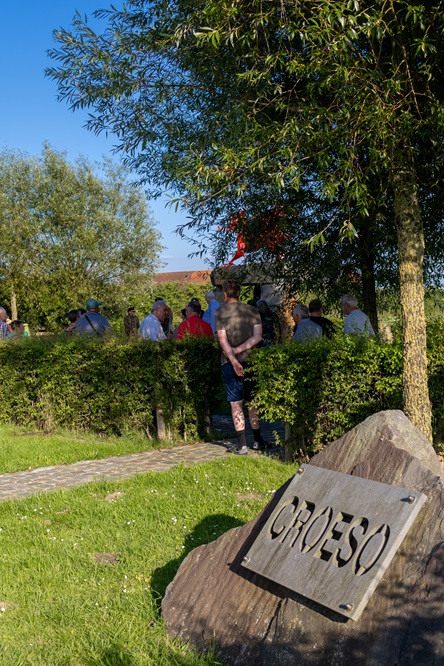
It is a memorial that the residents of the village of Langemark have now been performing every month for the past 16 years. Each time telling the story of a different fallen Welsh soldier.
Today’s Armistice Day event will be the 192nd, said 78-year-old Mario Liva, who hasn’t missed one.
“At first we were only three people,” he said. “It has grown a lot since then. The most beautiful thing is when there are people from Wales visiting who can read something about a soldier from Wales.”
It was the tragic death of one Welsh soldier in particular that brought about this community’s strong connection with Wales.
Ellis Humprey Evan
On July 31, 1917, Ellis Humprey Evans, died at a first aid point in Langemark after being wounded on the first day of the battle of Passchendaele.
Just over a month later, his poem ‘Yr Arwr’ (The Hero) won the bardic chair at the 1917 Eisteddfod in Birkenhead. Evans has since been better known by his bardic name, Hedd Wyn.
The significance of the events that took place in Langemark was first marked in 1992, when Flemish nationalist politician Lieven Dehandschutter had a plaque erected in the village.
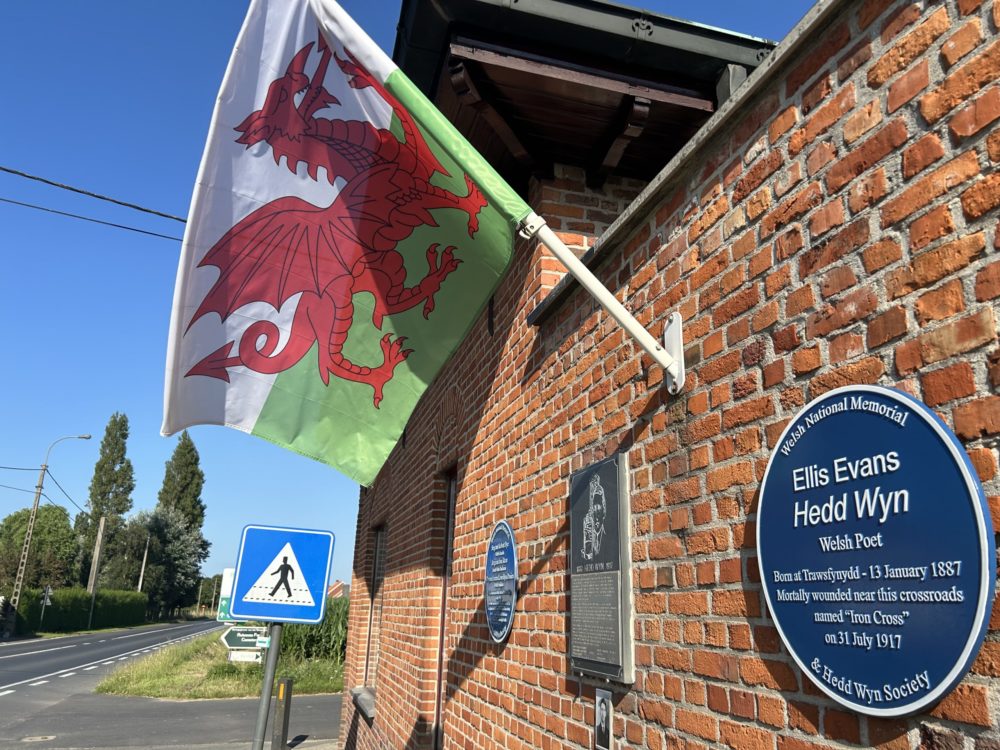
Dehandschutter, who speaks Welsh, later published a book in Dutch, Welsh and English called ‘Hedd Wyn: A Welsh tragedy in Flanders.’
His work ensured residents knew the story, but it was a 2007 visit by Queen Elizabeth II to Ypres, which is home to the Menin Gate memorial, which spurred them into action.
“The ceremonies started when Queen Elizabeth came to Belgium and she didn’t pass by here,” said Sophie Deniere, who lives in the farm house on which the memorial plaque was erected.
“They were drinking beer in the café, angry about Queen Elizabeth not coming, so they played music in front of the plaque.”
Croeso
Marc Decaestecke was the landlord of the Sportsman café, which sits opposite the plaque and has a big “Croeso” sign on its frontage, until last year.
“There was only a plaque of Ellis inaugurated in 1992 by Lieven Dehandschutter,” he said. “But the Queen came to Ypres and a few members of the café said we should do something for Ellis.
“A friend of mine is a bugler and he had his bugle with him. With two other guys, they went in front of the plaque and played the last post. From that moment, I thought we’ve got to do something.”
The Sportsman’s patrons continued to play the last post in front of the plaque on the first Monday of each month until, one day, a Welshman walked into the bar.
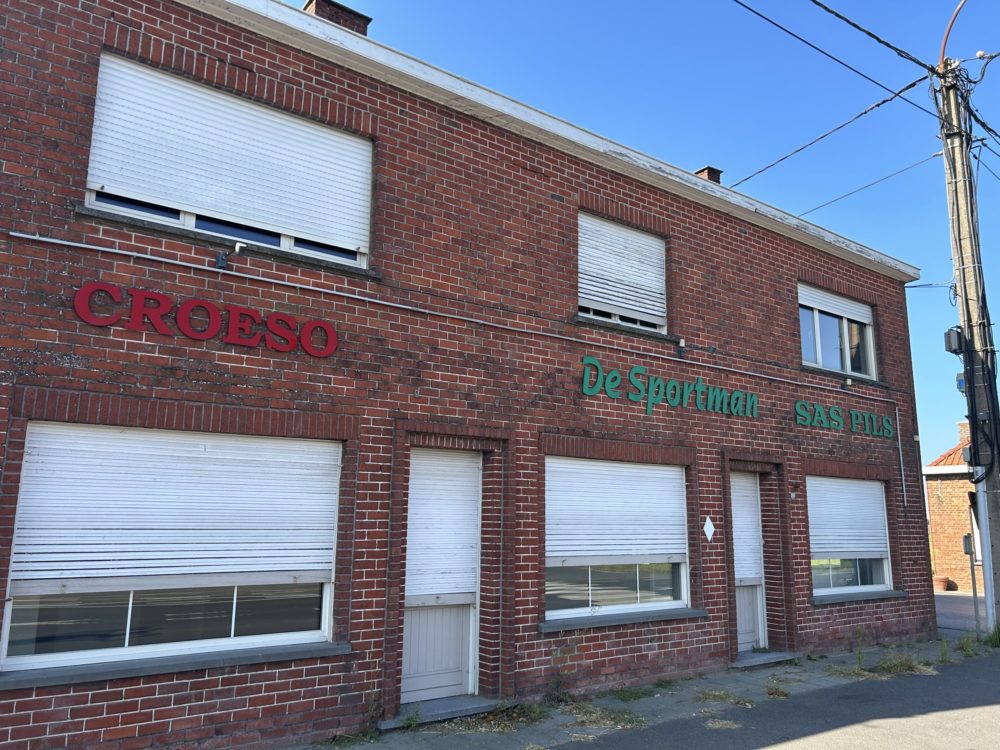
“A man from Wales came in one day in about 2010/2011, Peter Carter Jones, who is now the chairman of the Welsh branch of the Hedd Wyn Society,” added Decaestecke.
“I told him the story about Ellis. He went back to his bed and breakfast, where the owner heard Peter calling to Wales and saying ‘I met someone in Langemark who wants to do something for Wales’.”
The owner was Charlotte Cardoen, who, as well as running the ‘Varlet Farm’ B&B, was also on the committee of the Passchendaele memorial museum with fellow local history enthusiast, Erwin Ureel.
These chance encounters brought together a group of people determined there should be a more substantial memorial to the Welsh soldiers who fell in Flanders fields.
Ureel, who had already organised a monument for Scottish soldiers, first tried to organise a Welsh memorial in Zonnebeke, where the museum is situated, in 2012 to mark the 95th anniversary of the battle of Passchendaele.
“It didn’t work but I made contact with some Welsh people,” he said. “Sometimes you just need to have the right idea at the right moment.
“Then we made a second attempt at Langemark because there were some locals there who were having a monthly ceremony. Very simple: they came out, they sounded the bugle, went in and had a beer.”
Dragon
Recalling his first meeting with the group from Sportsman, Ureel said: “A friend put me in touch. I said what are your plans for the centenary. They said we are thinking of having a plaque or something like that. Then they asked what are your plans? I said I want to raise a dragon on a cromlech. For a couple of moments there was silence and then they said ‘OK we’re with you’.”
Then the group began the hard work of finding the money. It took three years, but the volunteers in Wales and Flanders eventually raised the £100,000 needed to realise their vision of a fitting monument to fallen Welsh soldiers.
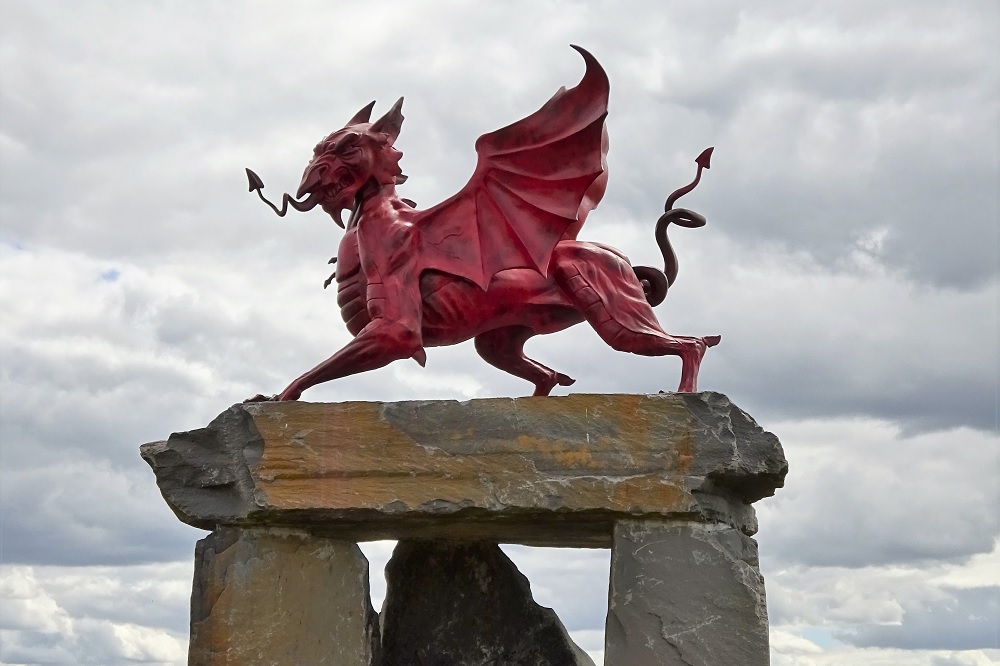
In 2014, an eight foot long red dragon sculpture made of bronze by a foundry in Powys, and raised on a cromlech of stone from Pontypridd, was unveiled at a Welsh memorial garden in Langemark, a short distance from where Hedd Wyn lost his life almost 100 years earlier.
The Welsh Government recently paid for it to be renovated, so when I visited for the monthly remembrance ceremony in August, the bright sunshine bounced off the fresh red paint.
Ureel had warned me not to expect a big turnout because it was the summer holidays. Maybe three or four people would be there, he said.
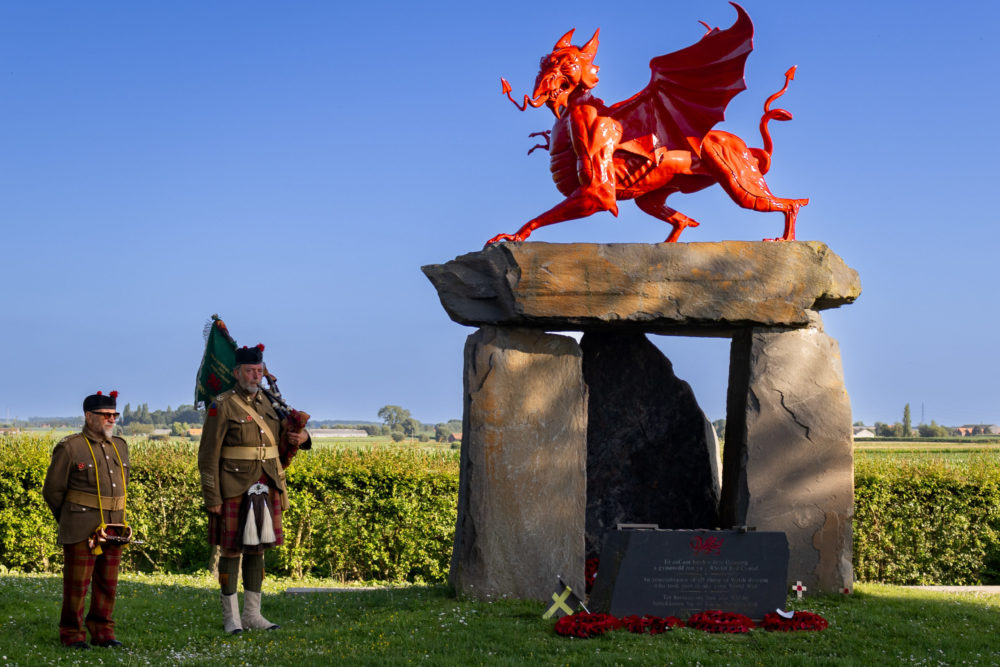
First to arrive was 65-year-old Marina, who explained she regularly attends memorial events of soldiers from different countries held in the area.
Nearby, there are monuments dedicated to Scottish, Canadian and German soldiers, as well as last surviving World War One veteran Harry Patch, and a number of cemeteries, including the Artillery Wood site where Hedd Wyn is buried.
“I do between sixty to eighty ceremonies a year,” she said. “I make the flowers for the ceremonies.” Wreaths and crosses brought by Welsh visitors, ranging from football cubs to veterans groups, lay in front of the Welsh memorial.
As Marina speaks, people continue to filter into the garden. In the end, there are ten times as many people as expected to hear the story of Captain William John Howells.
The last post was played by Bart de Grooter, a tartan-clad 66-year-old bugle player who also gives tours of the battlefields.
“For me, when I guide young people, it’s important to tell the stories of the soldiers,” he said.
“How they came by boat, how they had training, and then, how, several weeks later, they died. It’s important for everyone here to commemorate the soldiers who came from all over the whole world.”
Among those attending is Henry, who is originally from Flanders but has lived in Wales for three decades, working as an NHS dentist in Pentraeth, Ynys Môn.
“Today we went to the Tyne Cot cemetery and there were lots of Welsh graves,” he said. “The ceremony was quite moving, especially with the national anthem. I’m glad I came.”
After the ceremony, most of the attendees head to the barn of the house which borders the memorial garden.
Since the Sportsman café closed last year, Sophie Deniere and her husband Patrick have turned their barn into a makeshift Welsh-themed bar.
The walls are covered in Welsh flags and sports shirts, as well as information about Hedd Wyn and the First World War.
The bar also now sells three local beers which have been given a Welsh rebrand to raise money for the maintenance of the memorial.
While Patrick pours me a Hedd Wyn beer, I ask him how well he knows the story of the poet. “I’ll show you something that I have,” he replied and beckoned me out of the bar and towards his house.
After a minute or so, he produces a large box and starts lining up the contents against the wall of his house. It turns out to be a trilingual exhibition about the story of Hedd Wyn.
“We didn’t know the story when we bought the house in 1997,” said Sophie, “but it’s part of our lives now.”
The Armistice Day ceremony taking place in Langemark today will naturally be the biggest of the year, but in this corner of Flanders, you can be sure that Wales’ fallen are never forgotten.
Read more: Flemish beers given Welsh rebrand to fund dragon memorial
Support our Nation today
For the price of a cup of coffee a month you can help us create an independent, not-for-profit, national news service for the people of Wales, by the people of Wales.




